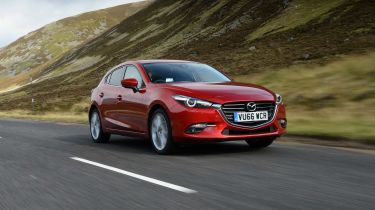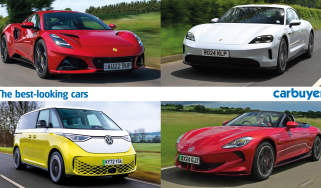Mazda3 hatchback (2014-2018) - Engines, drive & performance
The Mazda3 is more fun to drive than a Volkswagen Golf, but the basic petrol engine is quite slow
If you’re looking for a family hatchback that’s great fun to drive, the Ford Focus or BMW 1 Series are the leading contenders. However, the Mazda3 is right up there with the best, thanks to plenty of grip, sharp steering and a brilliant manual gearbox.
Despite the sporty driving experience, you actually get a pretty comfortable ride, too, soaking up the worst of the lumps and bumps without too much bother at all. The new Renault Megane offers better insulation from road and wind noise, however.
From behind the wheel, the Mazda3 feels logically laid-out, with a thick-rimmed steering wheel and bright dials. On the move, the light but accurate steering makes it feel agile around town, yet stable at speed. This is important if you intend to spend a lot of time slogging up and down motorways.
Mazda3 diesel engines
We’d recommend the top-of-the-range 2.2-litre SKYACTIV diesel engine. It takes the Mazda from 0-62mph in just 8.1 seconds, but is also very cheap to run. The brakes are good on all models, providing more than enough stopping power to bring the hatchback to a halt in any given situation.
However, it's also worth taking into account the less powerful 104bhp 1.5-litre diesel. Performance isn't as impressive as the 2.2-litre version – it takes 11 seconds to get from 0-62mph – but it's about on par for similarly powered diesels in this class. The engine needs to be worked harder than the 2.2-litre and, as such, harms fuel economy, but the engine itself is impressively quiet and refined.
Petrol engines
For low-mileage drivers, we’d recommend the less powerful 118bhp 2.2-litre petrol with the manual gearbox. It’s powerful enough to get the car from 0-62mph in 8.9 seconds, not that much slower than the 163bhp engine – which does it in 8.2 seconds – and it’ll be much cheaper to buy and run, too.
The automatic gearbox is only available with the diesel or the 118bhp petrol, but it’s best avoided unless completely necessary. The changes aren’t as smooth as the manual and it’ll cost you considerably more to both buy and run than the equivalent manual version.














